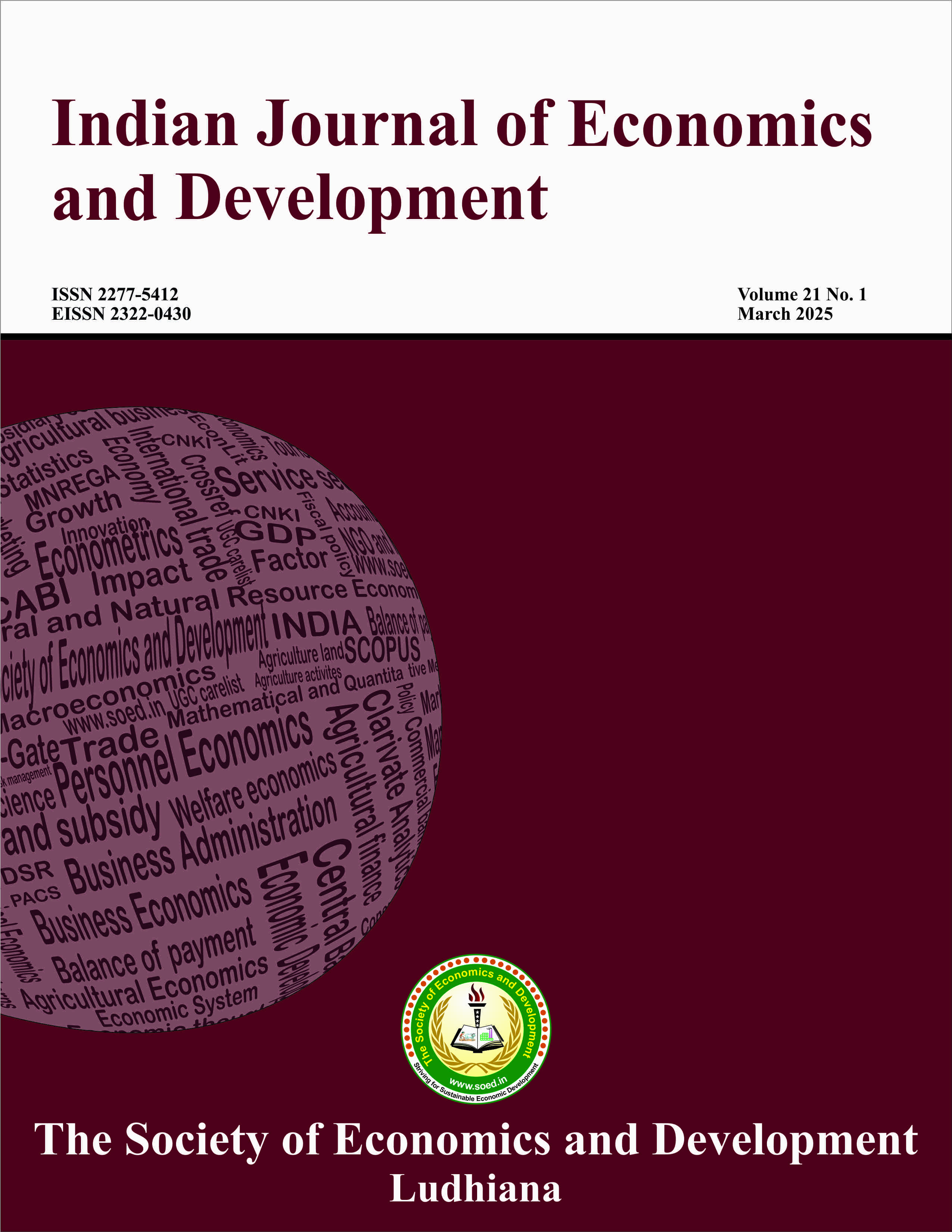A Commodity Outlook Approach of Cotton in India

Price: ₹ 500
Author: Ankita Rajput, Poonam Chaturvedi, Priyanka Mishra Dubey and Iti Gontia
Author Address: Assistant Professors, Associate Professor, Mangalayatan University, Jabalpur-481 662 (Madhya Pradesh), and Assistant Professor (Guest Faculty), JNKVV, Jabalpur-482 004 (Madhya Pradesh)
Keywords: Commodity, commodity outlook, exports, imports, market.
JEL Codes: C22, C52, Q02, Q11, Q17.
Abstract
The study aimed to analyze the outlook of cotton in India. The study analyzed the data obtained from FAOSTAT and the World Bank for the period 1960-2020. The analytical tools used in the study were simple growth rate, linear trend analysis, Augmented Dickey-Fuller test, and Vector Auto-Regression. The results indicated that net exports exhibited the highest growth rate, closely followed by per capita GDP. A lag length of 5 was selected for the model. Area harvested demonstrated the lowest Mean Absolute Percentage Error (MAPE) value, while net exports displayed the highest MAPE value. The findings showed the importance of risk management strategies to mitigate uncertainties associated with variables such as net exports and ending stocks.
Description
Indian J Econ Dev, 2025, 21(1), 132-142
https://doi.org/10.35716/IJED-24452



